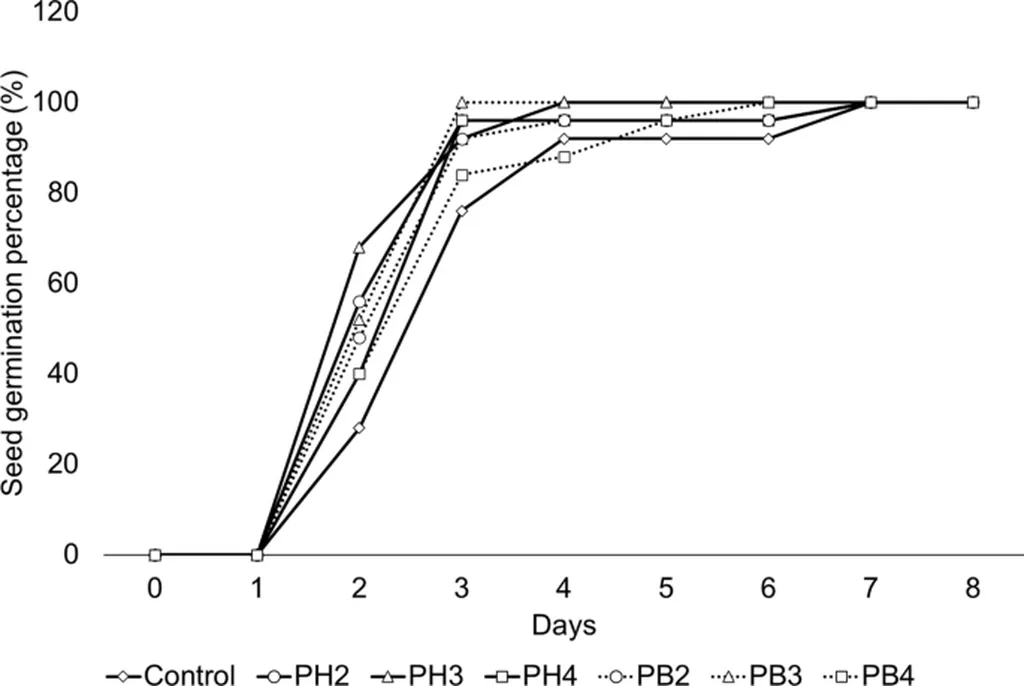In a surprising twist that turns air pollution into a potential agricultural boon, researchers have discovered that candle soot, typically viewed as an unwanted byproduct, can enhance seed germination and seedling growth in plants from the Solanaceae family. This finding, published in the *Caraka Tani: Journal of Sustainable Agriculture*, opens new avenues for sustainable agricultural practices and could have significant commercial impacts for the agriculture sector.
The study, led by Anca Awal Sembada from the Forestry Technology Research Group at Institut Teknologi Bandung, investigated the effects of candle soot on the germination of chili pepper, tomato, and eggplant seeds. The researchers applied three different concentrations of candle soot to the seeds and monitored various germination and seedling quality parameters. The results were promising: the 10-3 wt% concentration of candle soot reduced the germination time by 11% in chili peppers, 12% in tomatoes, and 10% in eggplants compared to the control group.
“This is a significant finding,” said Sembada. “Not only does candle soot enhance germination, but it also improves seedling quality without introducing any harmful elements into the plants.”
The study also delved into the biochemical aspects of seed germination, revealing that candle soot treatment led to a significant decrease in starch content and an increase in soluble sugar content. These changes suggest that the carbonaceous particles in candle soot play a crucial role in modulating starch-sugar metabolism during germination.
The commercial implications of this research are substantial. Farmers could potentially use candle soot as a low-cost, eco-friendly additive to improve germination rates and seedling quality, leading to higher crop yields. “This could be a game-changer for the agriculture sector,” said a spokesperson for a leading agricultural technology company. “If we can harness the power of candle soot, we could see a significant shift towards more sustainable and efficient farming practices.”
Moreover, the biocompatibility of candle soot, as demonstrated by the study, ensures that it does not introduce any harmful elements into the plants. This makes it a safe and viable option for agricultural applications.
The research also raises intriguing questions about the potential of other carbonaceous particles in agriculture. Could other forms of soot or carbon-based materials have similar effects? How might these findings influence the development of new agricultural technologies?
As the world grapples with the challenges of climate change and food security, innovative solutions like this one could pave the way for a more sustainable future. The study by Sembada and her team is a testament to the power of interdisciplinary research and the potential of turning unwanted byproducts into valuable resources.
In the quest for sustainable agriculture, every discovery counts, and this research is a significant step forward. As the agricultural sector continues to evolve, the insights gained from this study could shape the development of new technologies and practices, ultimately benefiting farmers and consumers alike.

